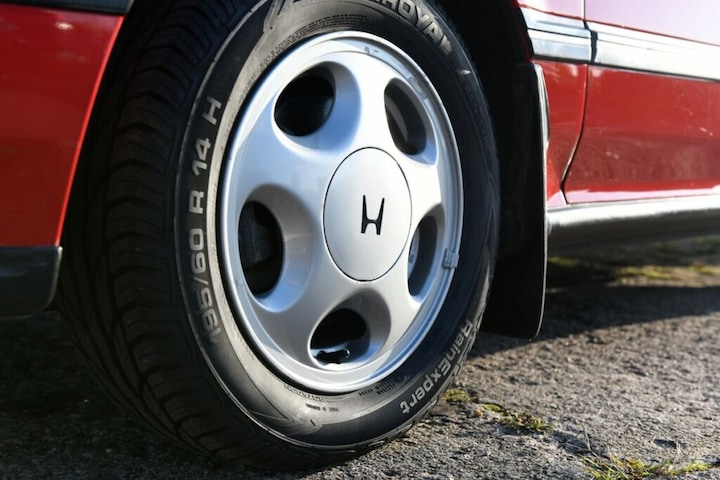They had already had sixteen-valve engines at Honda for a long time, because the CRX and Civic had been making noise with them for years when the brand took the next step in 1989. With the arrival of VTEC technology, the 1.6 16V engine was further enhanced and Honda achieved power from the block Which other brands needed a 2 liter engine. The second-generation CRX became popular for it, but you can also get the 150-strong 1.6i-VTEC engine in the regular three-door Civic. Was it competitive with other hot hatches to consider? We go back in time and try one of those quick civics.
Variable valve timing and electronic lift control. What sounds like a random collection of English catchphrases is the formula for the next stage after four-valve technology: variable camshafts. It works as follows: Above each pair of valves, for example the two intake valves of a cylinder, three camshafts rotate: two “tamed” on the right and left and one “sharp” in the middle. During normal driving, the two outer camshafts actuate the valves, while the one in the middle rotates without doing anything. One intake valve opens five millimeters, the other eight millimeters, so that the fuel-air mixture circulates properly. Advantages: relatively high torque and low fuel consumption (average 1:13.5). However, if you continue to press the throttle hard, the sharp camshaft comes into action: the three rocker arms interlock between the cam and the valves, so that the sharp cam now operates the valves. Both are now open 10.4mm and are also open longer. This means that a greater amount of the fuel-air mixture flows into the combustion chamber and then flows back as exhaust gas, because the exhaust valves are also controlled this way. Advantage: Higher strength.
Renault had not yet introduced the first 16-valves (19 16V) when Honda had already taken the next step with VTEC technology in the Civic and CRX.
VTEC operates from 1.6 to 8000 rpm
Depending on the position of the accelerator pedal, the VTEC system switches between 5300 and 6000 rpm, after which the engine can reach 8000 revolutions (!). The result: To get a maximum power of 150 hp, Honda needs not two liters of engine capacity – like Opel, which also has a top engine with the C20XE for the Kadett GSi 16V – but only 1.6 liters. Or roughly 100 horsepower per liter, which in 1989 was enormous for a standard naturally aspirated engine. However, the engine's twenty percent smaller capacity is noticeable in torque, meaning VTEC lags far behind the GSi 16V. On the other hand, 90 percent of the torque is available between 2,100 and 8,000 rpm.

In this generation Honda Civic, you sit very low.
It only comes alive above 4500 rpm
How does that feel? It wasn't very strong at first, but that became a different story at 3000rpm, with a slight dip between 4000 and 4500, after which it continues happily. The engine seems somewhat lethargic. From 6,000 rpm, there's no brutal extra punch as in Honda's later Type R, but the sound takes on an aggressive tone. The gear lever with its short stroke is also nice. And you sit low, like in a sports car. This gives you the spontaneous feeling that you are driving your car twenty kilometers faster than the average hot hatchbacks of the time, some of which I recently saw on this site. The remarkably smooth steering and chassis match the unobtrusive appearance. This is the car you could easily give your aunt to drive to bingo night, but it's also entertaining for experienced drivers.

You can recognize a Honda Civic with a VTEC engine by its wider headlights. And special VTEC wheels.

“Coffee buff. Twitter fanatic. Tv practitioner. Social media advocate. Pop culture ninja.”












More Stories
The disappointing post-pandemic reality of working from home in Spain
Can you remove the catalytic converter, particulate filter, or OPF from your car?
United States: Tesla does not take adequate measures to prevent abuse of Autopilot – Image and Audio – News